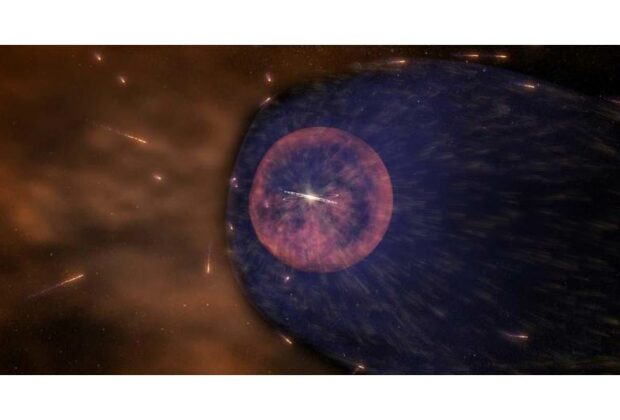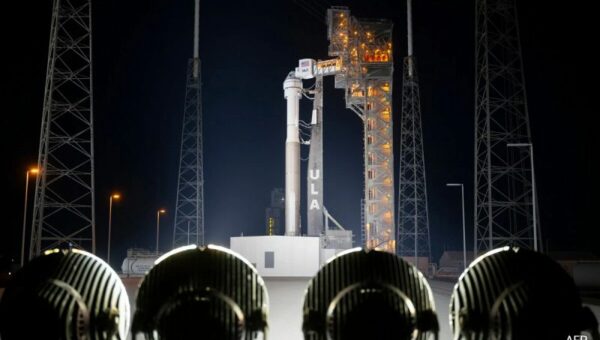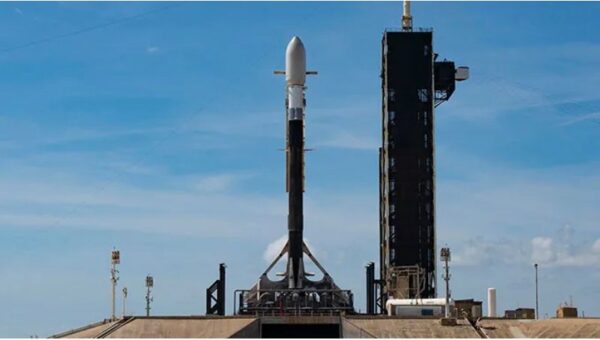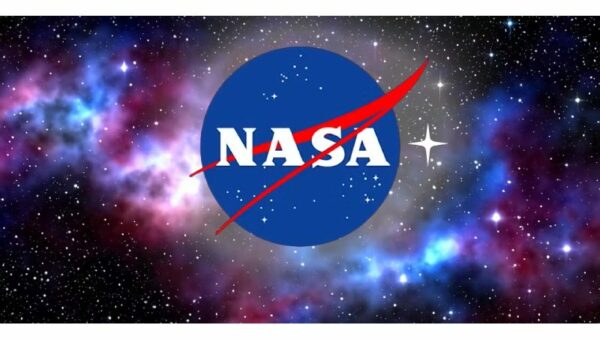Around two million years ago, the solar system traveled through a dense cloud of gas and dust between stars, leaving Earth to withstand the harsh conditions of interstellar space. This is how scientists believe Earth may have momentarily lost protection from the sun.
During that period, sabretooth tigers and mastodons were among the prehistoric creatures that coexisted on our planet with our ancestors. Additionally, it was during this time when Earth was experiencing the ice age that ended barely 12,000 years ago.
Numerous elements contribute to ice ages, such as the tilt and spin of our planet, the amount of carbon dioxide in its atmosphere, shifting plate tectonics, and surface volcanic eruptions. However, this discovery indicates that drastic shifts in our planet’s climate, such as the beginning and end of ice ages, could potentially be influenced by the location of our solar system within our home galaxy, given the date of when scientists believe Earth plunged through interstellar space.
More precisely, the team responsible for the latest discoveries hypothesizes that two million years ago, while traveling through the Milky Way, the solar system may have come across a dense area of interstellar gas and dust. Furthermore, that area might have been thick enough to obstruct the “solar wind,” a stream of charged particles that was emanating from the sun and perhaps bringing about a sharp drop in temperature.
Lead author of the study Merav Opher, a space physicist and heliosphere expert at Boston University, stated in a statement that “this paper is the first to quantitatively show there was an encounter between the sun and something outside of the solar system that would have affected Earth’s climate.”
Solar System, Earlier in History
The “heliosphere,” a “giant bubble” of shielding plasma emanating from the sun, envelops our entire solar system. The material that floats across the gaps between the Milky Way’s stars is known as the interstellar medium, and it is this layer of protection that is formed when solar winds press on it. A steady stream of charged particles from the sun shoots past Pluto, replenishing the heliosphere continuously.
The Earth’s surface is protected from radiation and galactic rays that may affect living organisms’ DNA by the heliosphere. Because of how important this shielding is, a large number of scientists think that the origins and development of life on Earth depended on it.
This team believes that the solar wind may have once been blocked by a frigid cloud of interstellar material, compressing the heliosphere in the process. This could have temporarily (in cosmic terms) taken Earth and other planets out of the heliosphere’s protective orbit.
“Stars move, and now this paper is showing not only that they move, but they encounter drastic changes,” said Opher.
Opher turned back time using advanced computer models to ascertain the impact that such a bombardment of thick interstellar dust on the heliosphere might have had on Earth. This made it possible for her and the group to see the sun’s location two million years ago and to ascertain the whereabouts of the heliosphere and the rest of the solar system at that time.
Additionally, they monitored the passage through time of a band of dense, cold gas known as the “Local Ribbon of Cold Clouds system” as it raced across the Milky Way. This indicated the possibility of a collision between the heliosphere and one thick cloud, dubbed the “Local Lynx of Cold Cloud,” located at the end of the Local Ribbon of Cold Clouds system.
Earth would have been exposed to the heavy and radioactive elements that make up the interstellar medium—which is made up of the remnants of huge stars that explode in supernovae—as a result of this. These particles are often blocked by the heliosphere; in the absence of that shielding, radioactive elements could have descended upon Earth.
This could account for a rise in iron 60 and plutonium 244 isotopes, which are discovered in Antarctic snow and ice cores and on the moon, respectively, and which date back two million years. Additionally, the collision of the heliosphere with the Local Lynx of Cold Cloud coincides with Earth’s cooling era of two million years ago.
According to Opher, the heliosphere may have been constrained by the pressure from the Local Lynx of Cold Cloud for a million years or for only a few hundred years. According to Opher, everything would depend on how big the cloud was in reality. She continued by saying that once this dense cloud’s impact subsided, the heliosphere would have expanded to encircle the planets once more.
For the time being, though, it is difficult to pinpoint exactly what effect this frigid intergalactic cloud would have had on Earth—that is, whether or not it might have actually triggered an ice age. In order to uncover further instances in which the solar system intersected with dense interstellar clouds and to ascertain whether these occurrences also correspond with ice ages, the scientists will now travel even farther back in time.
She is currently investigating the impact of so much hydrogen and radioactive particles passing through Earth’s atmosphere with her team.
“This cloud was indeed in our past, and if we crossed something that massive, we were exposed to the interstellar medium,” stated Opher. “This is only the beginning.”








